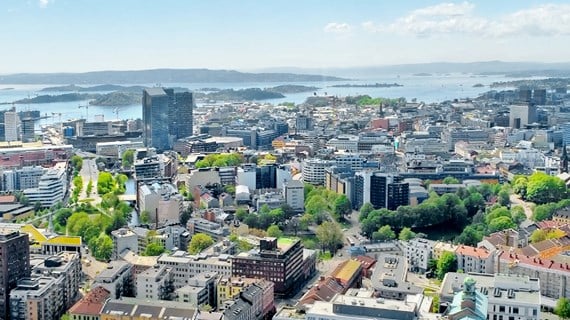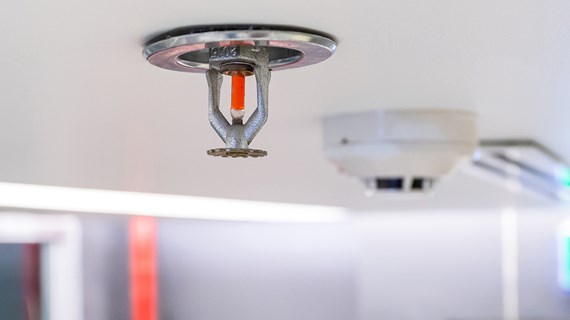
An energy wise data centre is reliable, optimises electricity consumption and utilises waste heat
Several new data centre projects are currently being planned in Finland. Data centres are a rapidly growing part of critical infrastructure. Finland already has strong attraction factors to appeal new data centre investments, but how do we ensure that their environmental impact and electricity consumption are minimised and waste heat is recovered? How can we ensure that energy wise and secure data centres are created in Finland?
Why are data centers interesting right now?
With the development of digitalisation, cloud services and artificial intelligence (AI), the importance of data centres is growing globally, so companies are constantly looking for new places to build. Finland has risen to prominence for a number of reasons:
- A cool climate reduces the need for cooling and energy consumption, which makes it easier to achieve a high PUE (Power Usage Effectiveness) figure.
- Finland's electricity network is stable, and the share of renewable energy in electricity production is high.
- Suitable plots of land for data centre construction are available in Finland.
- Finland’s extensive district heating network enables the recovery of waste heat.
In Finland, it seems that the construction of critical infrastructure is taking place, but Finland could have more experience of the special requirements of data centres. In order to increase the know-how, Finland should cooperate with the other Nordic countries. In the Finnish market, suppliers would be advised to partner up to enable sufficiently extensive delivery packages. Closer cooperation between companies and educational institutions would be also required to train new talents.
What kind of skills do building and maintenance of data centres require?
The benefits mentioned above only attract new data centres up to a certain point. If we want new investments keep focusing on Finland, we need to prove that we can make reliable, energy wise and secure data centres.
This requires high-quality planning and project implementation, identification of energy-efficient solutions, optimisation of electricity consumption, utilisation of waste heat and efficient safety systems. It is also important to take into account the importance of maintenance already during the construction phase.
Optimisation of data centres' electricity consumption
Data centres consume huge amounts of electricity. Energy efficiency is a critical part of their design and maintenance. One of the critical figures of the data centre is the PUE value, which indicates how much of the energy consumption outside the IT infrastructure is in the total consumption of the data centre.
Thanks to the cold climate and high-quality construction, the Nordic PUE values are excellent, and in Finland, the energy efficiency of data centres is even world-class.
The PUE value can be further improved, for example, by optimising cooling and ventilation. This, of course, requires constant monitoring of energy consumption and conditions, where artificial intelligence can also be utilised.
Waste heat recovery of data centres
Servers running in data centres generate a significant amount of heat. Therefore, the premises must be cooled all the time in order for the conditions to be optimal. The utilisation of waste heat from cooling is a key part of responsible energy use.
In Finland, waste heat from data centres can usually be directed to the district heating network, which reduces the carbon footprint of district heating. Caverion's Energy Centre enables efficient and responsible utilisation of waste heat. Waste heat is delivered to the district heating network using environmentally friendly carbon dioxide as a refrigerant.
Access control and security of data centres
The security of data centres involves precise requirements, which often may even exceed the corresponding requirements of the authority. Therefore, their design, installation and maintenance require special expertise.
The purpose of access control systems is to ensure that only appropriate persons have access to the premises. Fire detectors, sprinklers and gas extinguishing systems help minimise damage in the event of a fire, for example. Together, security systems help secure the continued operation of the data centre in any situation.
Suitable partner for data centre projects
Finland has lost a lot of traditional industry over the decades. The data centres could be an industry in which Finland has clear competitive advantages compared to the rest of the world. So I think it makes sense to invest in attracting new data centre projects in cooperation with, for example, city planners, district heating companies and construction companies.
Building and maintaining data centres requires very extensive technical expertise and project management capabilities. In their complexity, they could be compared to a sophisticated industrial facility. A complex environment also creates special requirements for occupational safety, which must be state-of-the-art.
Process management is important in both the building and maintenance phases. Suppliers are required to have accurate plans, certifications and documentation of all measures, because even a small interruption in the operation of the data centre will lead to high costs.
Caverion has extensive experience in building and maintaining critical infrastructure. We are able to act as a partner throughout the value chain, from design to build and maintenance. We understand the specific requirements of data centres and ensure that all technical solutions work seamlessly together. Our customers also appreciate our efforts to promote occupational safety.
Caverion is one of the few operators in Finland that is able to act as a partner in projects of this size and provide building technology solutions for data centres from substations, energy centres and heat solutions to access control and maintenance. We also are able to fulfill strict scheduling requirements, taking into account international agreement models, as we know that any delay can result in significant additional costs.
If you are looking for a partner to implement a data centre project, please contact us. We will be happy to explain in more detail what kind of solutions are required to build and maintain an energy wise and secure data centre.
And if you are interested in a data centre project spesifically in Finland, please contact Tapio Lajunen, Head of Growth Technologies in Caverion Finland: tapio.lajunen@caverion.com.
This blog article was published first in Finnish on caverion.fi/blogi.







